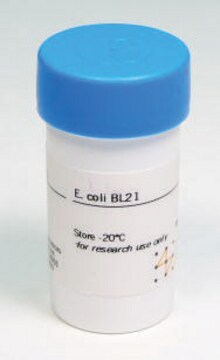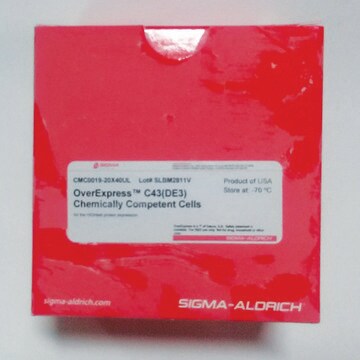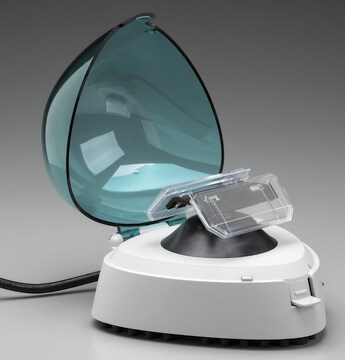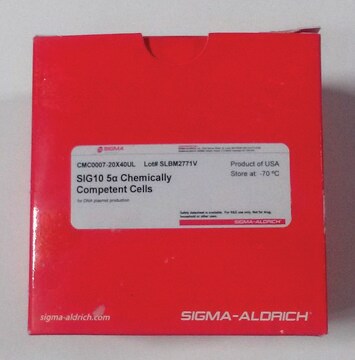CMC0016
BL21(DE3) Electrocompetent Cells
Escherichia coli, rod shaped
Sinónimos:
BL21 strain
About This Item
Productos recomendados
product name
BL21(DE3) Electrocompetent Cells, for protein expression
biological source
Escherichia coli
grade
for molecular biology
growth mode
adherent or suspension
morphology
rod shaped
technique(s)
microbiological culture: suitable
cell transformation
competent cell type: electrocompetent
transformation efficiency: ≥5 × 109 cfu/μg
shipped in
dry ice
storage temp.
−70°C
General description
Cloning efficiencies are increased 25-1,000 fold relative to other preparations of BL21 cells, which is essential for construction of complex expression libraries.
Genotype
F – ompT hsdSB (rB- mB-) gal dcm (DE3)
Features and Benefits
Components
- BL21(DE3) electrocompetent cells
- pUC 19 transformation control DNA
- recovery medium for expression
Related product
Storage Class
10 - Combustible liquids
Certificados de análisis (COA)
Busque Certificados de análisis (COA) introduciendo el número de lote del producto. Los números de lote se encuentran en la etiqueta del producto después de las palabras «Lot» o «Batch»
¿Ya tiene este producto?
Encuentre la documentación para los productos que ha comprado recientemente en la Biblioteca de documentos.
Protocolos
BL21(DE3) Electrocompetent Cells are provided in 25 μL aliquots, sufficient for one reaction. Transformation is carried out in a 0.1 cm gap cuvette. Optimal settings for electroporation are listed in the table below. Note that alternate settings result in transformation efficienes about 20-50% lower. Typical time constants are 3.5 to 4.5 msec.
Nuestro equipo de científicos tiene experiencia en todas las áreas de investigación: Ciencias de la vida, Ciencia de los materiales, Síntesis química, Cromatografía, Analítica y muchas otras.
Póngase en contacto con el Servicio técnico








